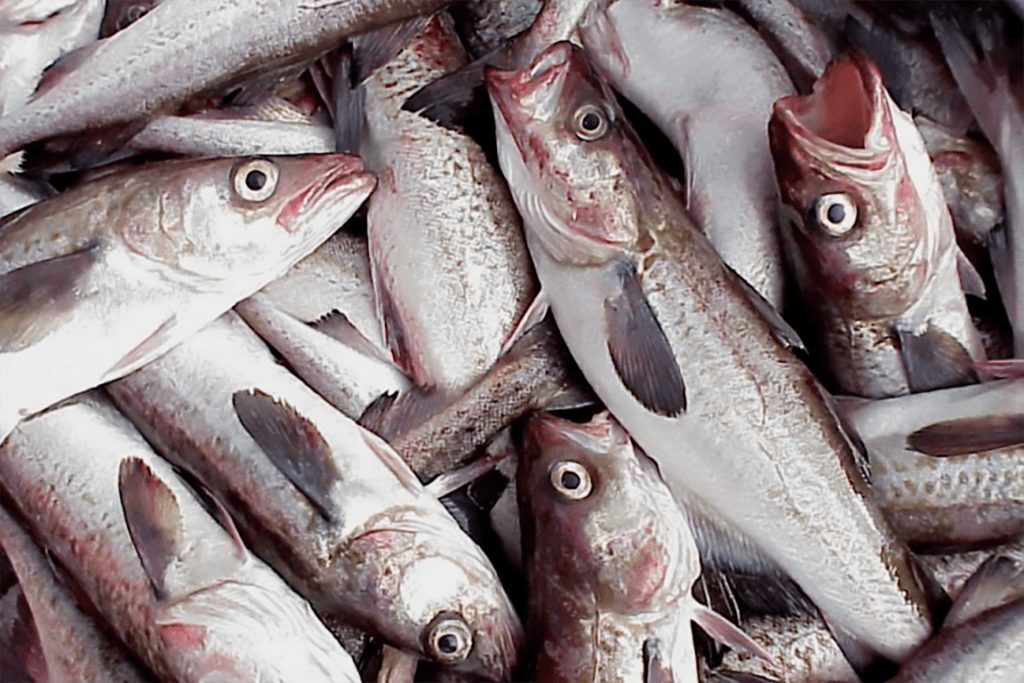
A new NOAA Fisheries study on the Eastern Bering Sea concludes that ecosystem-based fisheries management has proven an effective tool to date and may help ensure sustainable fisheries under climate change for the near term.
“Ecosystem-based management doesn’t just help fish, it helps fishing communities,” said Kirstin Holsman, a biologist at the Alaska Fisheries Science Center. “It is the best strategy we have to provide harvest stability in the coming years. It buys time for Alaska fisheries and fishing communities to prepare and adapt.”
Still by mid-century, or even sooner, Alaska fisheries may reach a tipping point or rapid decline in the Eastern Bering Sea if climate change continues on its current trajectory and fish and fisheries are not able to adapt to these changing conditions, she said. To guarantee long-term success, we need to couple EBFM with global climate change mitigation, she said.
The study focused on three key fisheries: Alaska Pollock, Pacific cod and arrowtooth flounder, a key predator of Pollock. Unlike Alaska Pollock and Pacific cod, arrowtooth flounder has been harvested historically well below the maximum sustainable yield due to a lack of product development.
Model projections also showed that in the warmest scenarios by 2075 the chance of Pollock and Pacific cod catch declines would be 70 percent and 36 percent respectively, if fish and fisheries didn’t move. Under recent sustained warm ocean temperatures in the southeastern Bering Sea, fish and fisheries have moved northward into the northern Bering and Chukchi seas. Scientists said this addresses to the importance of having both modeling and research surveys to understand the dramatic environmental changes in the ocean.
Without EBFM, declines for all species were projected due to climate change.
Holsman said that a similar Gulf of Alaska climate integrated modeling project for the Gulf of Alaska has just been funded.
EBFM offers a holistic approach that considers the entire ecosystem, including human activity.
Still fishing is only one variable that impacts the population of a species.
Other factors could include how a particular species interacts with other species, effects of environmental changes or pollution and other stressors on habitat, water quality and changing climate, said the team of scientists from the Alaska Fisheries Science Center, the Pacific Marine Environmental Laboratory, and the University of Washington’s School of Aquatic and Fishery Sciences. The University of Tasmania Institute for Marine and Antarctic Studies and Centre for Marine Socioecology also participated in the study.
The study is part of NOAA Fisheries’ Alaska Climate Integrated Modeling project, a multi-year, interdisciplinary effort to project climate-driven changes to the Eastern Bering Sea ecosystem, from physics to economics. Participating scientists are also looking for answers on how fisheries management can sustain fish populations and help fisheries and communities adapt to these changes.
The study was designed with critical input from resource managers at the North Pacific Fishery Management Council and other stakeholders, said Alan Haynie, an economist at the Alaska Fisheries Science Center and co-author of this study.
The project takes global climate change projections and applies them at the regional level to the Bering Sea ecosystem.
The big challenge facing the study team is the uncertainty about ecosystem and global climate response, and the huge range of possibilities for the future.
With so many scenarios to consider, “how do we look at that and see what we need to do today to help us weather that storm, to be ready in 50 years,” Holsman asked.
Given those many scenarios, the team incorporated important socio-economic information on how fishery managers make cross-species allocations and also analyzes how commercial fisheries respond to changes in their catch allocations. This study has set a new standard for how interdisciplinary models should project future catches, they said.
Resource managers have practiced EFM in the Bering Sea or 35 years. This practice entails use of a socio-economic model, individual species management measures and an overall limit on the total amount of biomass (average weight of all fish aught) that can be removed from the ecosystem to determine sustainable catch rates, the team said.





